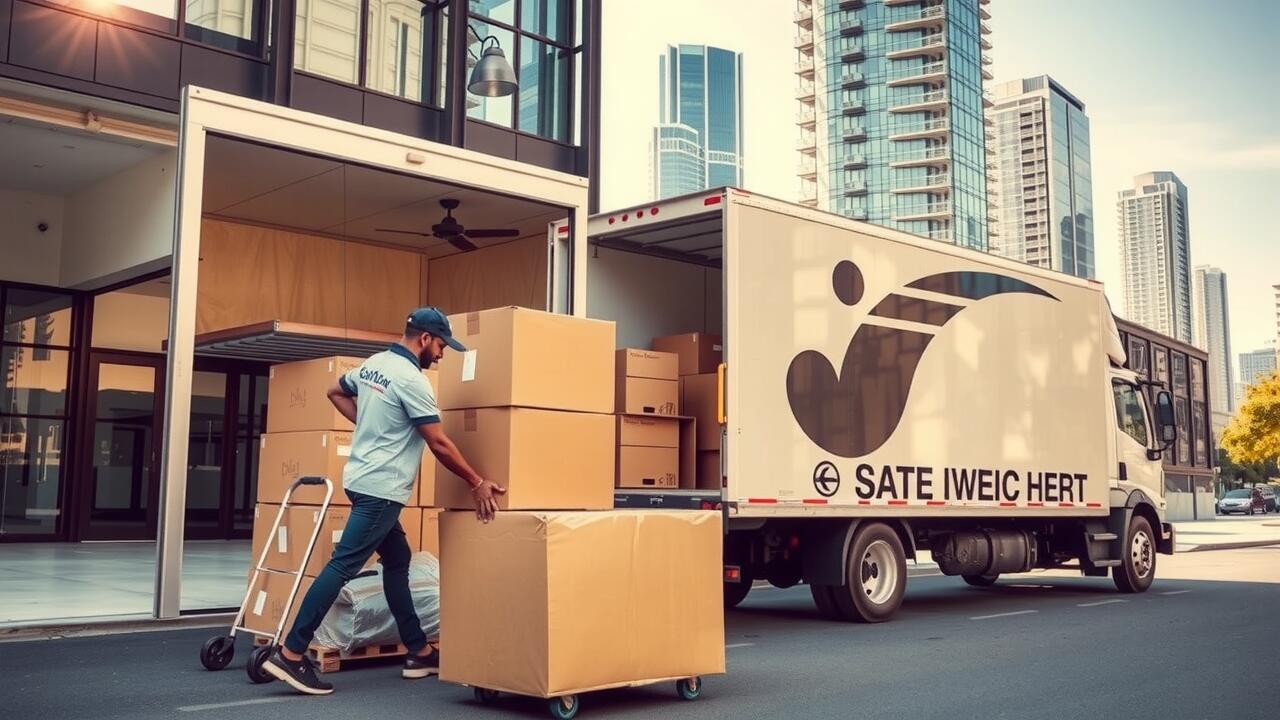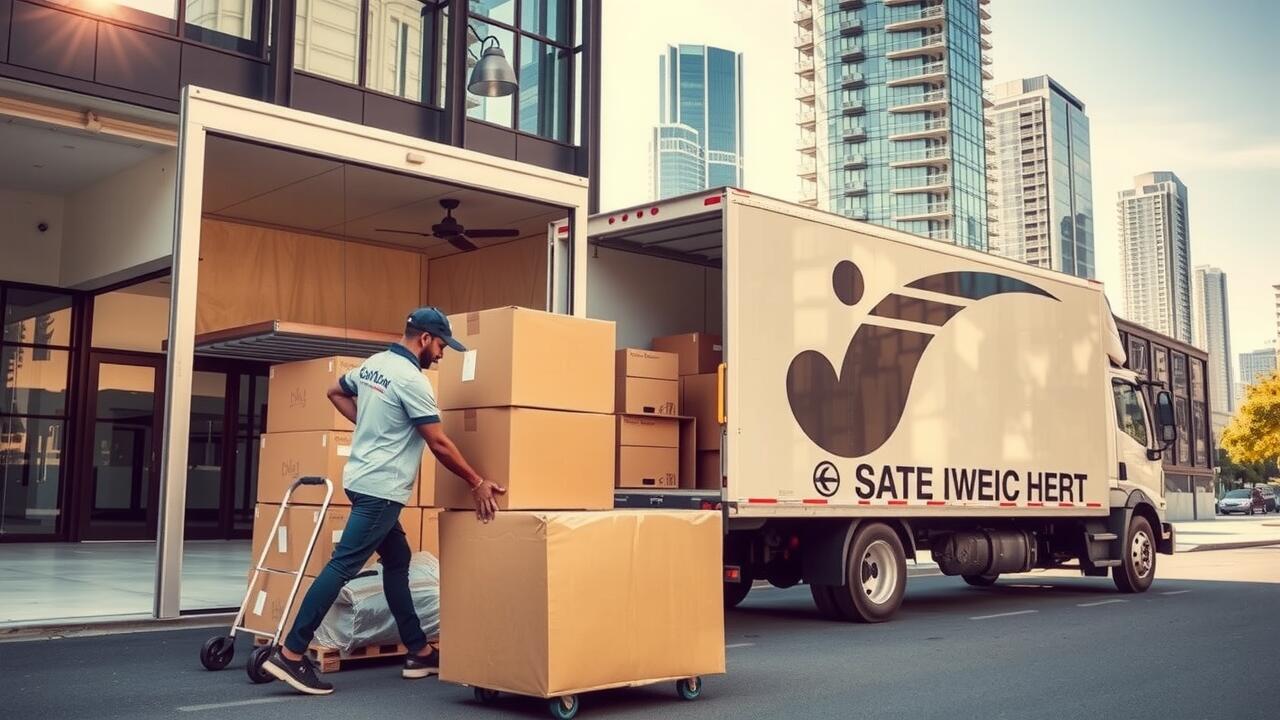
Table Of Contents
Organizing Your Inventory
Organizing your inventory is a critical step in preparing for a commercial move. Begin by assessing all items in your current location, identifying equipment, furniture, and supplies that will be relocated. This inventory list will help you determine what you need and what can be discarded or donated. Taking stock also prevents last-minute surprises during the transition, allowing for a smoother packing process.
When moving a business, consider leveraging local services such as Arlington North, Bethesda Commercial Moving. These professionals can assist in not only the logistics of the move but also in developing an efficient organizational system for your inventory. They can advise on how to categorize items based on priority, usage frequency, or department, ensuring that your new space is set up for optimal efficiency right from day one.
Categorizing Essential Items
When organizing your inventory for a commercial move, categorizing essential items is crucial for an efficient process. Start by identifying key categories such as office equipment, furniture, supplies, and technology. This structured approach allows for easier tracking and packing. Each category may require different handling techniques, so keeping them organized aids in reducing potential confusion during the move. For businesses in areas like Arlington North, Bethesda Commercial Moving services can help streamline this process.
Labeling each category clearly will facilitate a smoother transition to your new location. Consider using color-coded labels or a detailed inventory list that specifies what belongs in each category. This strategy not only helps movers understand what items need special attention but also simplifies unpacking at the new site. By taking the time to categorize efficiently, you can minimize downtime and ensure that your business operations resume without unnecessary delays.
Setting Up Utilities and Services
Before a commercial move, it is crucial to ensure that all utilities and services at the new location are properly set up. Start by contacting local utility providers to transfer water, electricity, gas, and internet services. Establishing these arrangements ahead of time helps avoid any service interruptions on moving day. Document confirmation dates and service activation to keep everything organized.
Consider the specific needs of your business as you make these arrangements. For example, if your company requires specialized telecommunications services, reach out to providers early for installation appointments. Companies specializing in Arlington North, Bethesda Commercial Moving can assist in coordinating these services, ensuring a seamless transition to your new workspace. This proactive approach can contribute to a more efficient move and allow you to focus on settling in.
Ensuring Seamless Transitions
Ensuring a seamless transition during a commercial move requires careful planning and coordination. Establish clear communication with moving companies like Arlington North, Bethesda Commercial Moving to set expectations and timelines. It is beneficial to create a detailed moving schedule that outlines every step of the process. Prioritize essential tasks, such as transferring utility services and notifying clients of your new location. This proactive approach minimizes disruptions to your business operations.
Coordination with your team is essential to facilitate a smooth transition. Designate point persons for specific tasks to streamline communication and ensure accountability. Involve employees in the packing process, allowing them to manage their own workspaces. This collaborative effort fosters a sense of ownership while also speeding up the moving process. Keep everyone informed about updates and timelines, so there are no surprises on moving day.
Preparing for Packing
Preparing for packing involves careful planning and organization. Begin by assessing the items that need to be moved. Take inventory of furniture, equipment, and supplies that will transition to the new space. Consider the size and fragility of each item, as this will determine how you package them. Proper labeling is crucial during this step, as it will save time and effort when unpacking in the new location.
Gather necessary packing supplies to ensure the process runs smoothly. Boxes of various sizes, packing tape, bubble wrap, and markers will be essential. You can find quality packing materials through local suppliers or moving companies. If you are looking for professional help with the packing process, companies like Arlington North, Bethesda Commercial Moving can assist in handling everything efficiently.
Gathering Necessary Supplies
Gathering the right supplies is crucial for a successful commercial move. Start by making a list of everything you will need, including boxes of various sizes, packing tape, bubble wrap, and markers for labeling. Consider the specific items in your inventory to determine if specialized packing materials are necessary. Obtaining these supplies ahead of time will streamline the packing process and help minimize disruptions during the move.
In Arlington North, Bethesda Commercial Moving can provide guidance on which supplies are most effective for your specific needs. Many moving companies also offer packing services, which can help reduce the burden on your team. If you plan to handle packing internally, visit local retailers or search online for bulk packing supplies. This approach not only saves costs but also helps ensure that all items are secure and organized for transport.
FAQS
What is the first step to take when organizing my inventory for a commercial move?
The first step is to create a detailed list of all items that will be moved. This includes categorizing essential items, such as furniture, equipment, and supplies, to ensure nothing is overlooked during the transition.
How can I ensure a seamless transition when setting up utilities and services?
To ensure a seamless transition, contact utility providers in advance to schedule service reconnections or disconnections. Research and set up any necessary services like internet, phone lines, and security systems ahead of your moving date.
What supplies do I need to gather for packing during a commercial move?
You will need packing boxes, bubble wrap, packing tape, markers for labeling, and protective materials for fragile items. It’s also helpful to have furniture covers and a toolkit on hand for disassembling larger items.
How should I categorize essential items during the moving process?
Categorize essential items by their function and priority. For example, separate items into groups such as "office equipment," "furniture," and "supplies," and then further prioritize them based on their necessity for immediate use in the new location.
Is it necessary to hire professional movers for a commercial move?
While it’s not mandatory, hiring professional movers can significantly reduce stress and ensure that the move is completed efficiently and safely. They have the expertise, equipment, and manpower to handle larger and more complex moves effectively.

